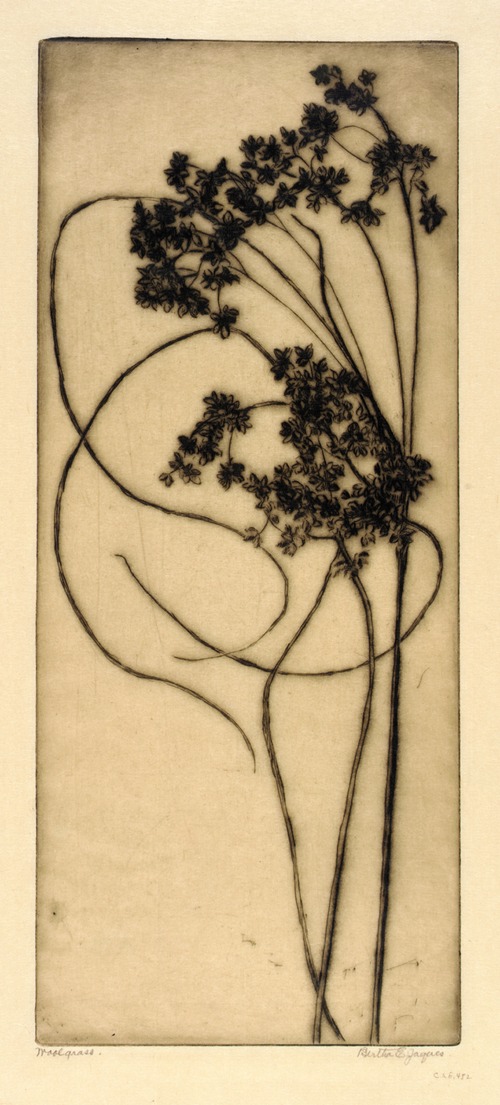
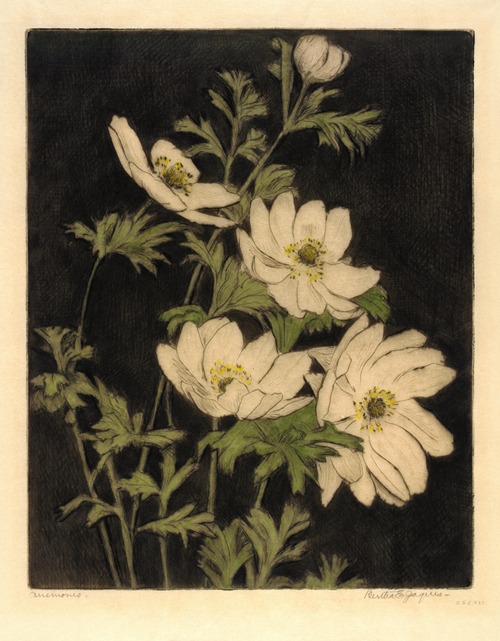
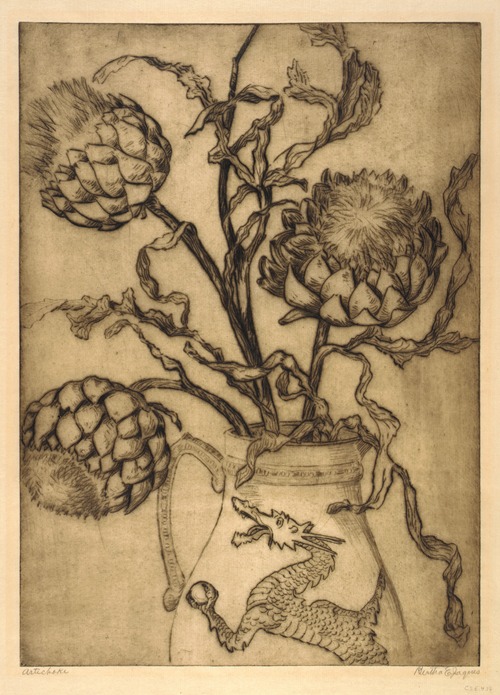
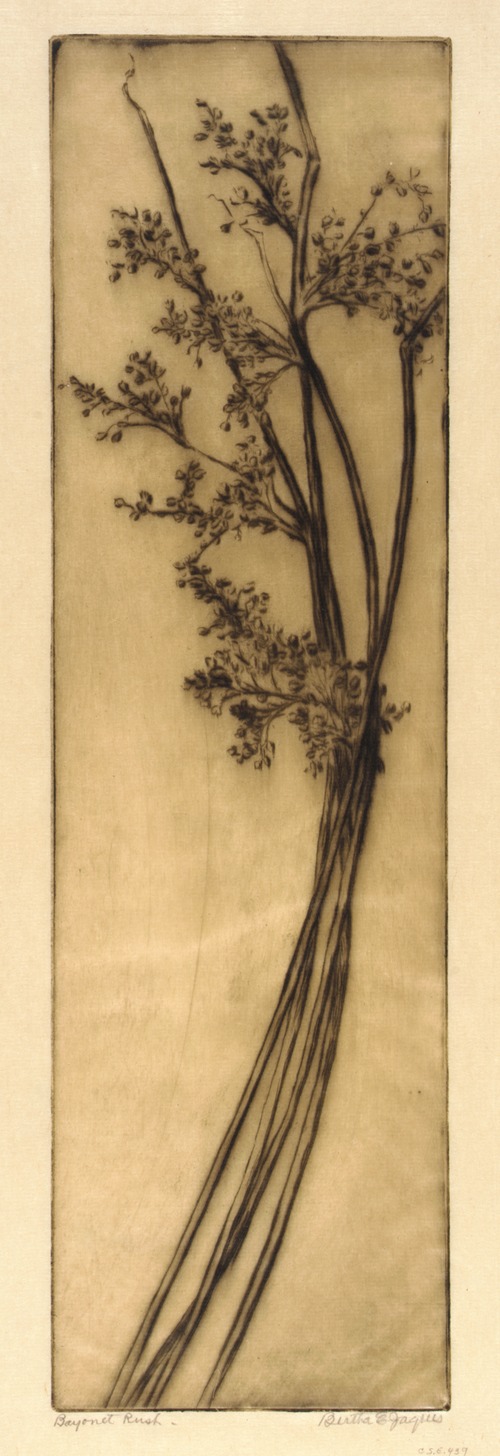

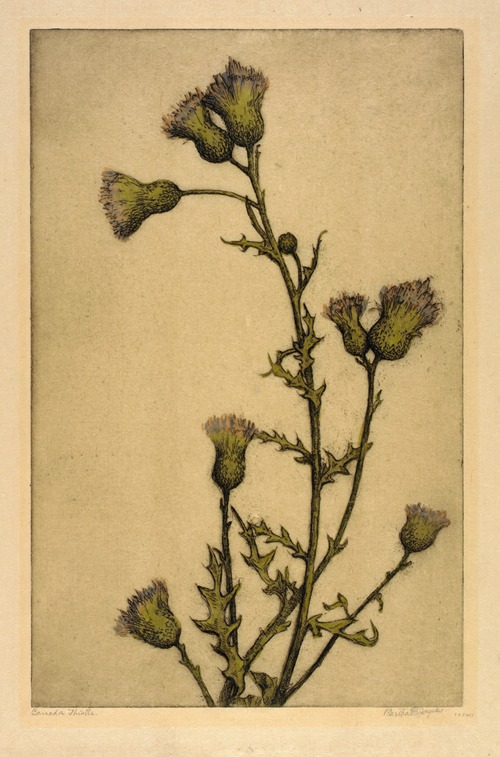

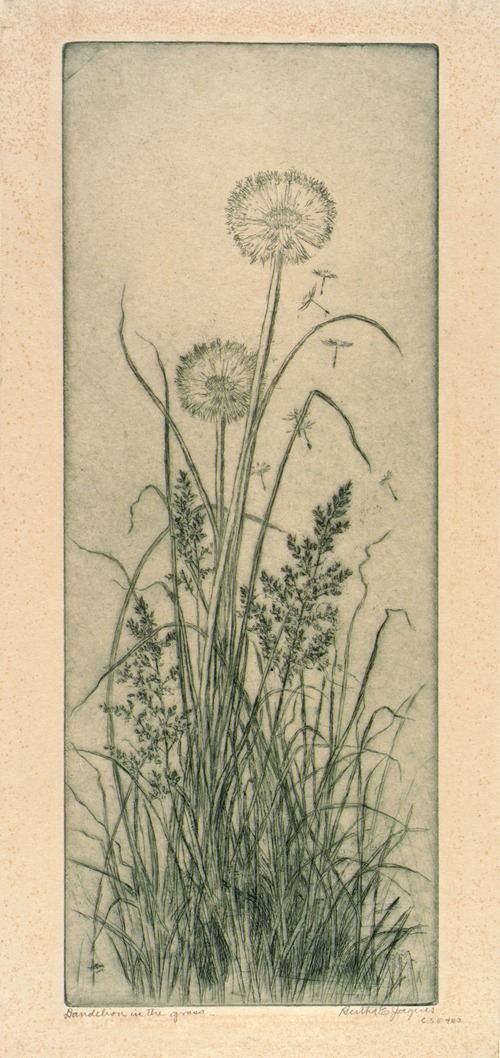
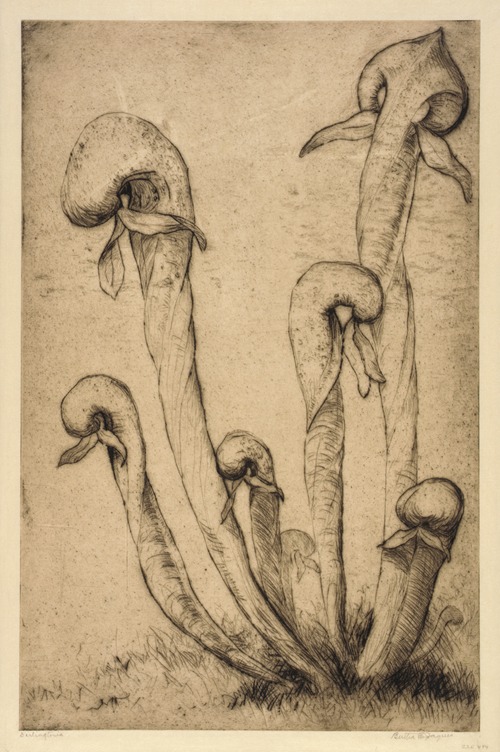
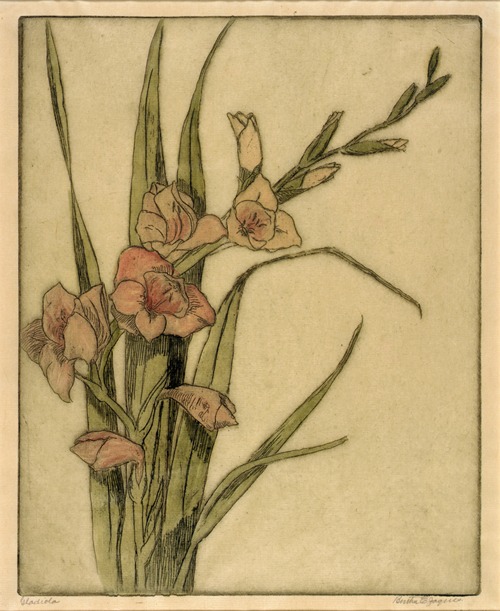
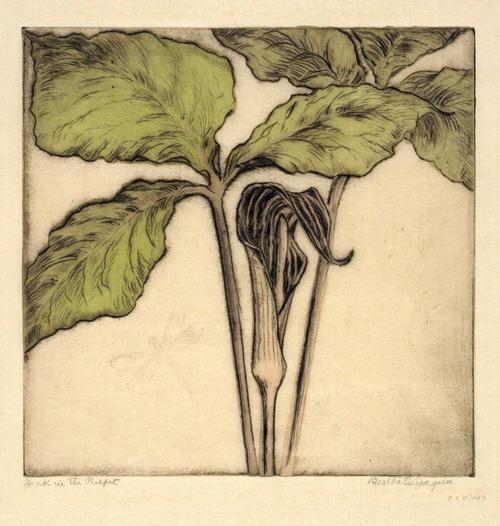
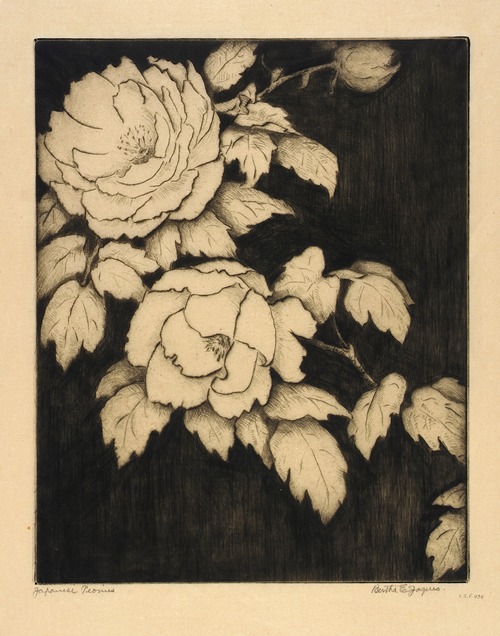

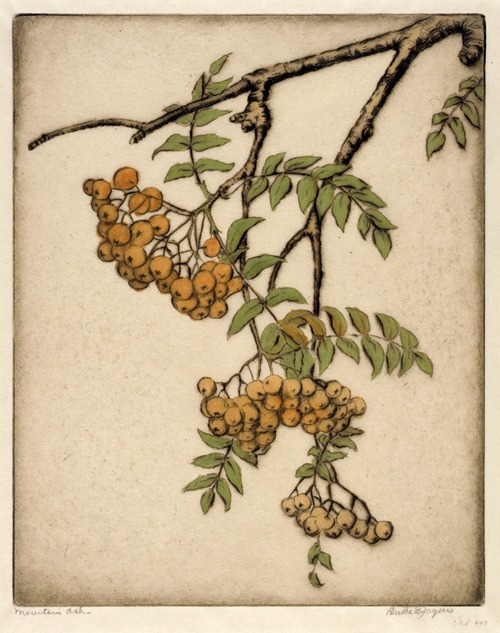

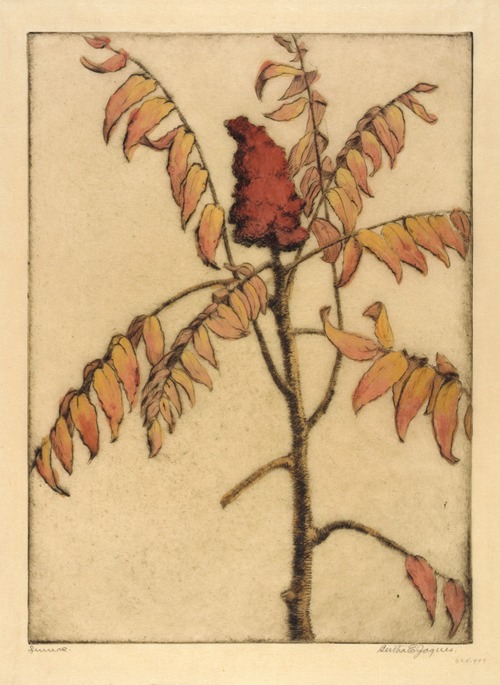
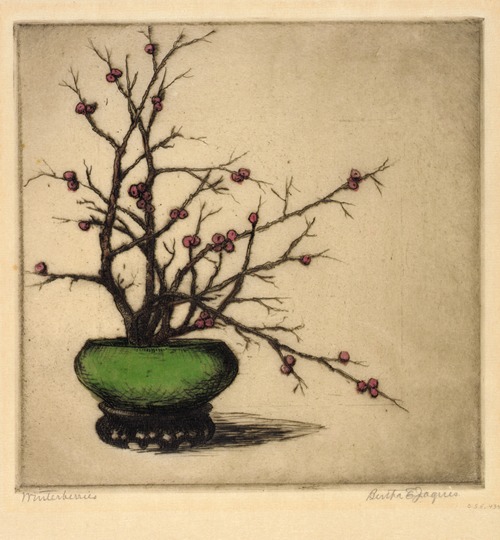
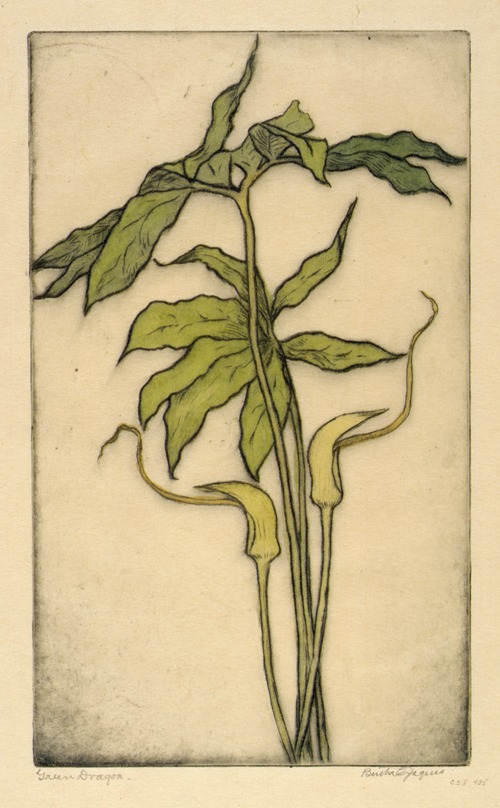
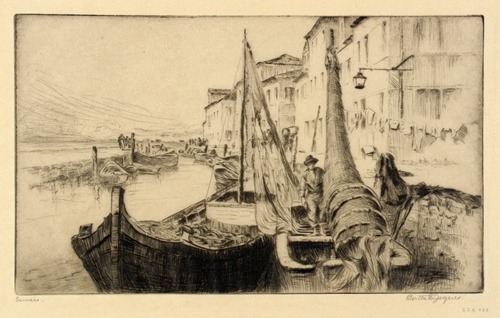
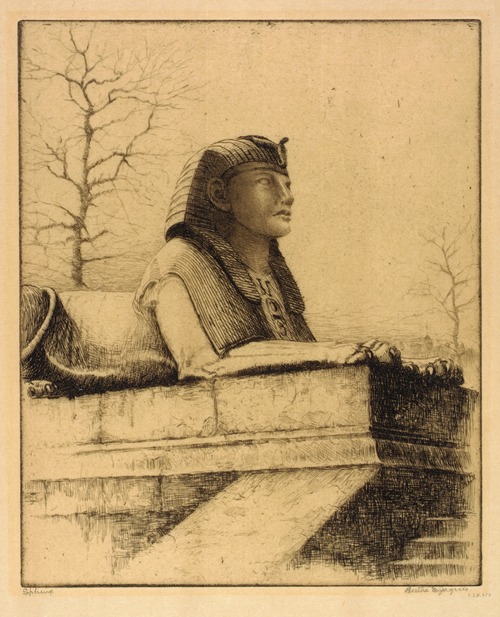
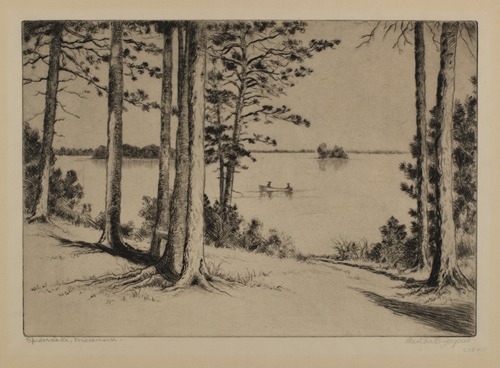
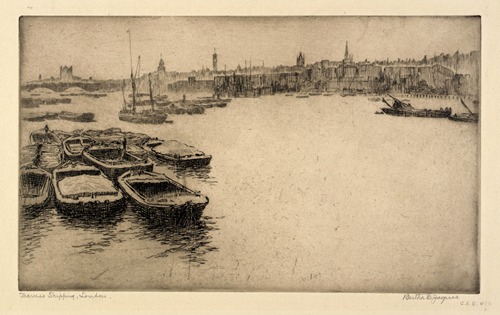
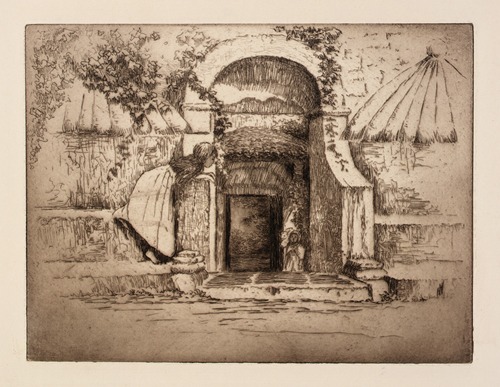
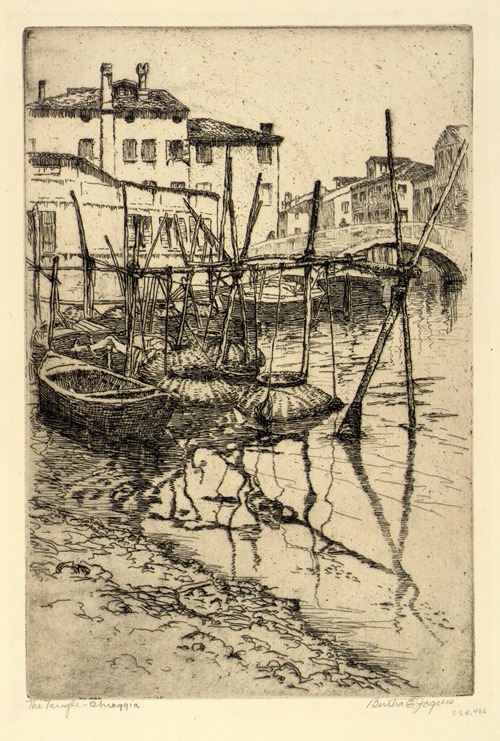
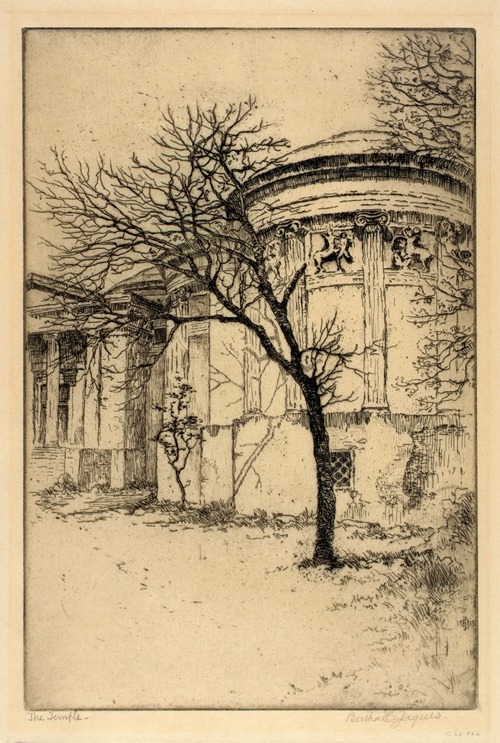

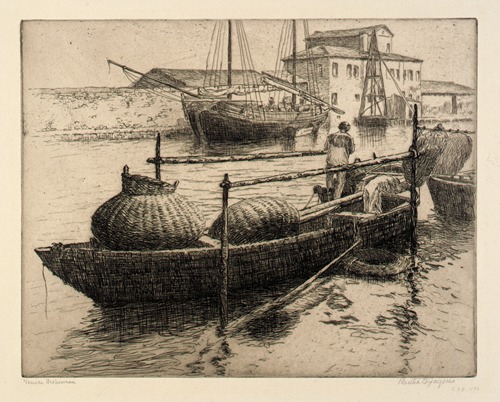
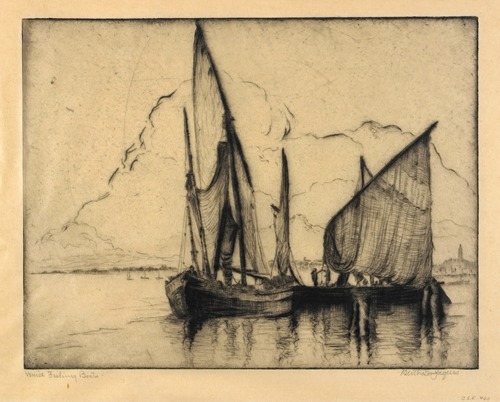
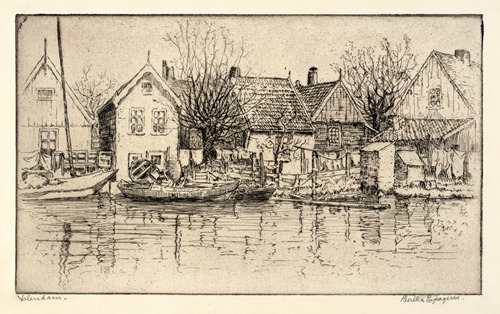
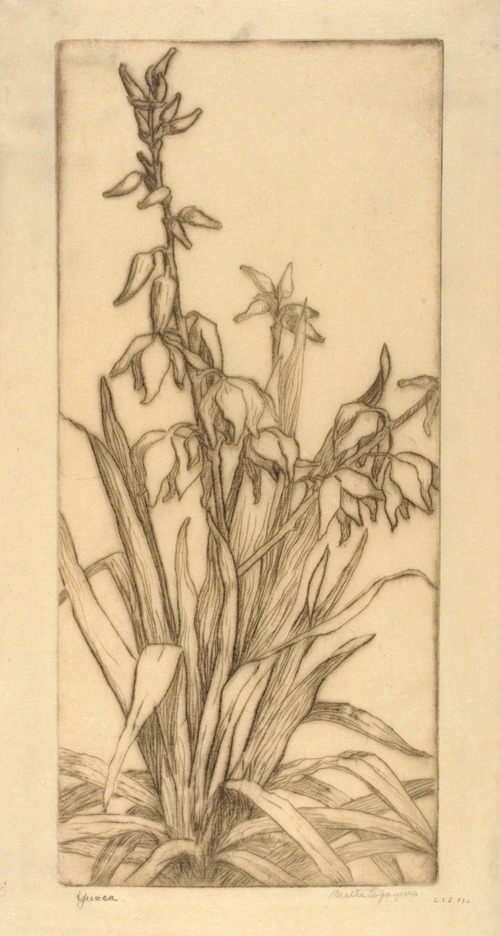
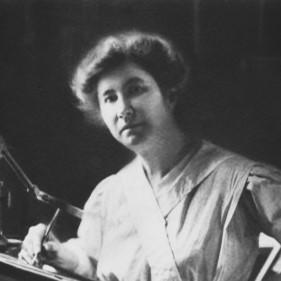

Bertha Evelyn Jaques was an American etcher and cyanotype photographer. Jaques helped found the Chicago Society of Etchers, an organization that would become internationally significant for promoting etching as a popular printmaking technique. She is best known for her hand-colored botanical prints and scenes from her foreign and domestic travels.
Bertha Jaques (née Clausen) was born in Covington, Ohio. She enjoyed a comfortable and independent life, traveling to the United Kingdom by herself in September 1889. She met her husband, William K. Jaques, in 1883 and they moved to Cedar Rapids, Iowa, in 1885. There, Jaques wrote poems for the Railway Conductors' Monthly until 1889 when they moved to Chicago for her husband to practice medicine. They were married on Thanksgiving Day, 1889.
In 1893, Jaques attended the World's Columbian Exposition and was inspired by the prints of James Abbott McNeill Whistler, James Tissot, and Anders Zorn. At this time etching was considered out of style in America. Therefore, Jaques largely taught herself how to etch plates and make prints. She kept detailed records of her progress and the results of how variables affected the finished image. She began to etch on kettle copper with her husband's surgeon's tools. Without a press she enlisted several men to stand on the plates to transfer the image to paper, although this proved to be an unsatisfactory method.
Jaques acquired her first printing press in 1894. William Jaques was very supportive of his wife's artistic career. He purchased her equipment and materials, and also hired domestic help to allow Jaques to focus entirely on her art. She made her first prints in 1894 and would continue to produce 461 unique plates during her career which ended in 1939. In addition to her etchings, she also made more than a thousand cyanotype photographs.
To popularize the medium of etching, Jaques—along with other etchers in Chicago in 1909—formed the Needle Club, an informal collective of etchers passionate about reintroducing the American public to the art of etching. Later, Jaques would become a founding member of the Chicago Society of Etchers in 1910, an organization that was primarily responsible for showing members' etchings at the Art Institute of Chicago; she served as Secretary from its foundation through the 1930s. The Society would attract international members and renown with Jaques herself as the driving force behind much of its success at popularizing etching in 20th-century America.
Thanks to her growing reputation in Chicago Jaques was invited to speak on the nature of etchings throughout the country. Her tours brought her some degree of notoriety, being named a visiting celebrity to Nebraska. From 1913 to 1917 she toured throughout the country giving lectures in states including Indiana, South Carolina, Kansas, and Georgia.
Although self-taught, she drew inspiration from the etchings of Rembrandt, whom she held in unsurpassed regard as a printmaker. In a published lecture from 1935 she extols the nature of line as being one of the primary elements of art, as "the most basic utterance of life." According to Jaques lines can evoke any emotion and it forms the basis of human creativity from primitive symbols to letters to pictures. Her lecture ends with a brief plea for the listeners to visit galleries and view prints up close to appreciate the use of lines, artistic composition, and to become familiar with what a "good" print looked like.
She also became a central figure in the wider community of etchers, and many artists would travel to her home, including many visits from Helen Hyde. She became a mentor, collector, and promoter of several younger artists, including James Swann whom she entrusted giving the position of secretary in 1937. Bertha Jaques died in Chicago in 1941.
A portrait of Jaques by Nelly McKenzie Tolman is currently owned by the Smithsonian American Art Museum.





























